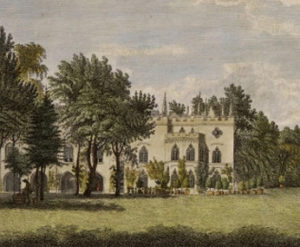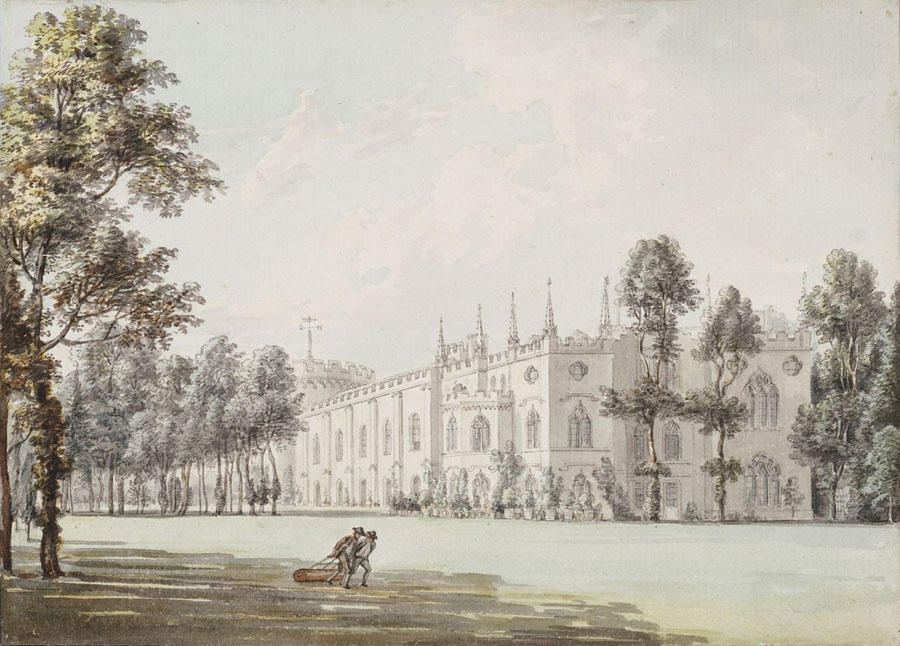Strawberry Hill House is internationally famous as Britain’s finest example of Georgian Gothic Revival architecture.
“The enclosed enchanted little landscape then is Strawberry Hill”
Horace Walpole began his garden at Strawberry Hill House in 1747 with five acres, which he added to over 35 years until he had 46 acres of land. It took the purchase of 41 separate plots from seventeen different owners to achieve this. Nine acres of Walpole’s land were garden and the remainder served as pastures and meadows. Cows and sheep grazed in the meadows and Walpole, on occasion, brought the cows up to the house for syllabub made for his visitors!
The garden you see today reflects its initial size but without the views down to the River Thames which were so important to Walpole. The Strawberry Hill Trust began the garden restoration in 2010 with support from the Heritage Lottery Fund, aiming to restore the key features of Walpole’s garden where possible. The main structure of the garden has been recreated and the focus is
now on continuing essential planting, fine-tuning and maintenance. The garden at Strawberry Hill is listed as Grade II* in the English Heritage Register of Parks and Gardens of Special Historic Interest

Download our FREE Family Garden Trail and explore Horace Walpole’s 18th century Garden.

The Eighteenth Century Garden
Walpole did not intend his garden to reflect the gothic style of his house, but he wanted it to frame his gothic vision: ‘one’s garden on the contrary is to be nothing but riant, and the gaiety of nature’. He admired poets and gardeners such as Alexander Pope, another Twickenham resident, and the painterly principles they applied to their gardens.
Walpole believed that any “man of taste” should be able to design his own garden and never used a garden “improver”. He admired what in the 18th century was called the “modern” style in gardening: an approach to garden design which we associate with the English Landscape. In his essay, On Modern Gardening, Walpole attributed William Kent as its originator when he wrote that “Kent leapt the fence and discovered all nature was a garden”. At Strawberry Hill, views of the river Thames were a vital element in the construction of both the house and the garden.
Walpole mixed formal borders with more natural expanses, though never committing fully to the picturesque ideals of the landscape garden. He wrote a great deal about his garden, describing its layout as well as detailing the specific plants that were grown there, though he was always ready to admit his lack of knowledge such as the time he
thought a lettuce that had gone to seed was a rare West Indian plant!